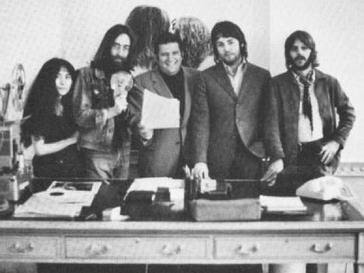This is part two of a two-part blog. Part one, which highlight the bottom half of my ten picks, can be found here.
5: Lovecraft Country
If someone watched three episodes of this series and then told me "it wasn't for them", I would understand. When it comes to things that will turn off viewers, this series ticks all the boxes. Reasons you might not like it include...
- It is science fiction
- It is horror
- It is fantasy
- It is violent
- It is rich with social commentary
- It is sexually graphic
However, I liked it for many of those reasons although I am not sure I fully understand it. Listening to podcast commentaries (featuring the writers, actors and production team) helped but the multi-layered program requires close attention.
I guess I'm a sucker for grand spectacle, special effects, epic soundtracks and creepy horror. Wait until you meet Topsy and Bopsy, the stuff of nightmares! Lovecraft Country gives a nod to so many of my favourites from the world of horror, sci-fi and fantasy, and I love homage. HBO/Crave
4: I May Destroy You: If you haven't heard of Michaela Coel, expect to become familiar with her soon. Aged 33, she is already proving to be a massive talent. Her latest project, I May Destroy You, in which she plays the main character Arabella, was written, produced and co-directed by her.
At its core, the series could be pompously described as a modern bildungsroman (a story that follows a young person's spiritual education).
Arabella is a Twitter star dealing with the newfound celebrity that has come with the release of her debut book, Chronicles of a Fed Up Millennial. The pressure to meet deadlines for her next book are compounded by the debt she has amassed after blithely spending her advance.
Shirking responsibility, once again, she goes out for a few drinks with friends in London. When she wakes the next morning, she struggles to remember events from the night before. But, she feels certain she was slipped a "roofie" (Rohypnol, the date rape drug). What follows is a non-linear detective story that keeps viewers guessing...while forcing them to dismantle what "consent" means in the 21st Century. HBO/Crave
3: After Life: Season Two: A black comedy with heart. That description will always win me over. Tony (Ricky Gervais) has lost his wife to cancer and is bent on ending his own life. However, he has promised her to take care of their dog and realizes that, because of his truncated life, he can behave any way he wants. His choice to live unapologetically leads to hysterical and unexpected consequences.
Season One was a perfect story arc and I didn't think a second season was necessary. I was wrong. Season Two is equally entertaining and laugh-out-loud funny. In typical British fashion, each season is a tight, six-episode set, with a total running time of less than three hours. One could watch the series in a single sitting. Netflix
2: The Plot Against America: This one will take you by surprise, so it is tough to explain the premise without giving away the plot. It is a David Simon (The Wire, Generation Kill, The Deuce) project, which is that is all it took to convince me to give it a try.
The sets are tremendous and so many of the performances are award-worthy, particularly the work of Zoe Kazan. Much like the aforementioned Michaela Coel, hers is a name you will be hearing more about. This series is well worth the six-episode investment of time, and the accompanying official Podcast is engaging and informative. HBO/Crave
1: Better Call Saul: Season Five: It likely comes as no surprise to those who know me that this show would top my rankings, being such fan of the show's creators, Vince Gilligan and Peter Gould. I love the complexity they build into their multi-dimensional characters and I'm always riveted by the smart dialogue and avant garde cinematography. Editor Chris McCaleb has stepped admirably in to fill the void left by Breaking Bad alumni Kelley Dixon. The montages are still spell-binding.Honourable Mentions
- My wife and I just started The Good Lord Bird. So far, it looks like a great candidate for our 2021 top TV list.
- Documentaries were not included in my reviews, but The Last Dance was splendid. Tread. The Ripper and McMillions were also wildly entertaining for different reasons.
- Not making the Top Ten cut but worth mentioning were, Curb Your Enthusiasm - Season 10, Dead to Me, The Outsider, The Great, The Undoing and Upload. Like I've said, we watched a lot of TV during the pandemic








































